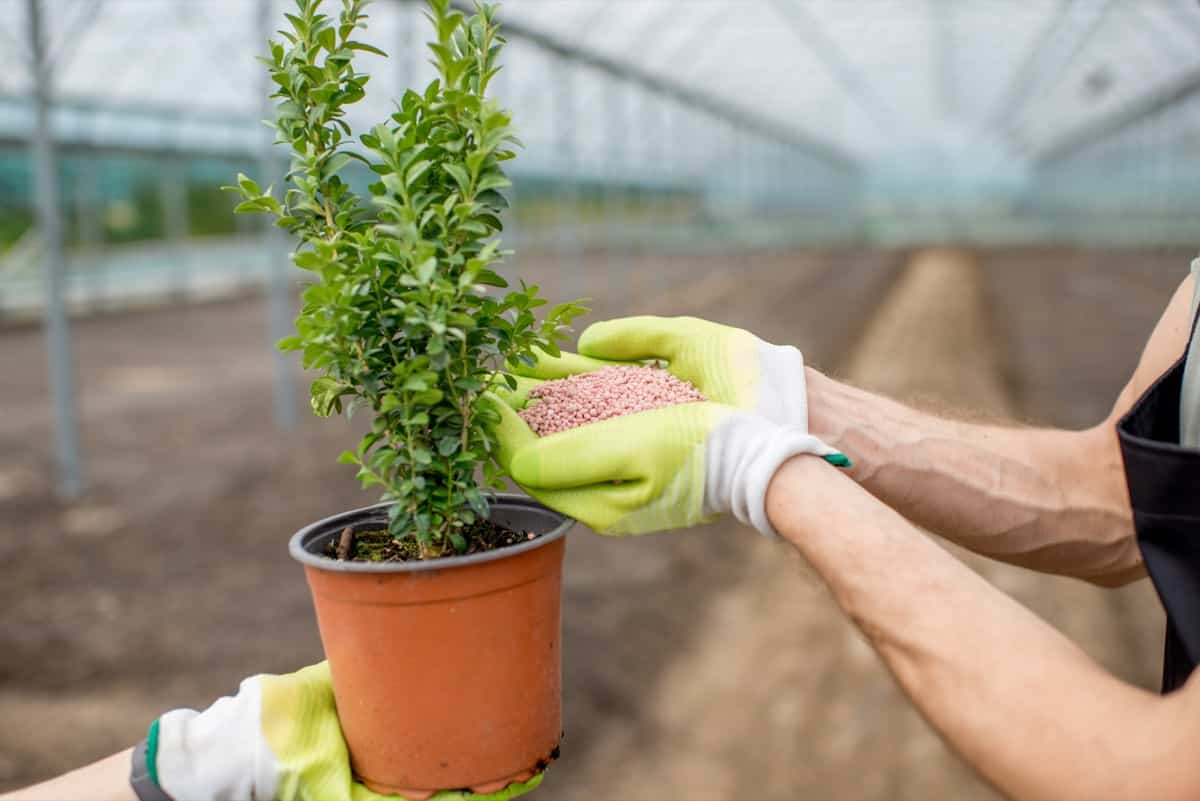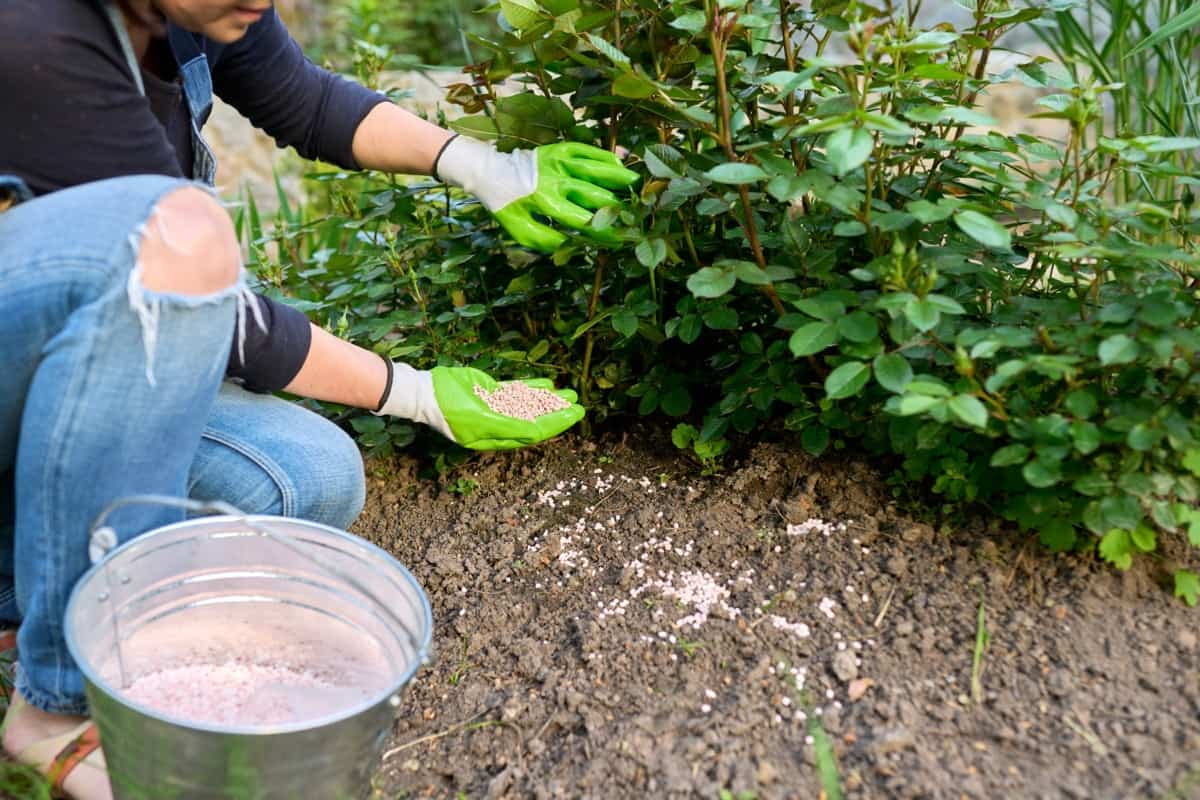Fertilizing your plants is one of the most vital aspects of gardening that ensures their health and growth. There are, however, some common fertilizing mistakes that gardeners make. You can maximize fertilizer benefits and promote your plants’ overall well-being by avoiding these mistakes. This article will discuss ten common mistakes to avoid in fertilizing plants.

Common Mistakes to Avoid in Fertilizing Plants
Over-fertilizing: Understanding the Right Amount
When plants are over-fertilized, they receive more nutrients than they can utilize. This can lead to nutrient imbalances, burning of roots, and stunted growth. Excess fertilizer can leach into groundwater or runoff into nearby water bodies, causing pollution and harming aquatic life. To avoid over-fertilizing, follow the instructions provided on the fertilizer packaging. These instructions usually specify the recommended dosage and frequency of application.
It is essential to measure and apply the fertilizer accurately, avoiding guesswork. Testing the soil’s nutrient content can also help determine the right amount of fertilizer to use. Monitoring a plant’s health and growth regularly can also provide valuable information. It may be necessary to adjust fertilizer applications if plants show signs of nutrient deficiencies.
Neglecting Soil Testing: Importance of Knowing Nutrient Levels
Soil testing provides valuable insights into plants’ specific needs, helping to ensure their optimal growth and development. By neglecting soil testing, gardeners risk over-fertilizing or under-fertilizing their plants. Over-fertilization can lead to nutrient imbalances, harming plant health and even causing environmental damage. On the other hand, under-fertilization can result in nutrient deficiencies, stunting plant growth and reducing crop yields.
Soil testing allows gardeners to identify nutrient deficiencies or excesses, enabling them to make informed decisions about fertilizer application. It provides information on essential nutrients such as nitrogen, phosphorus, potassium, and secondary and micronutrients. With this knowledge, gardeners can select the appropriate fertilizers and apply them at the right time and in the right amounts, promoting healthy plant growth and maximizing the efficient use of resources.
In case you missed it: Top 10 Common Mistakes to Avoid in Greenhouse Farming

Using the Wrong Fertilizer Type: Matching Nutrient Needs
Fertilizing your plants at the right time ensures they receive the nutrients they need, resulting in healthier and more productive plants. To avoid this mistake, understand the nutrient requirements of your plants. Conduct a soil test to know your soil’s nutrient levels and deficiencies. This will help you choose the right fertilizer with the correct nutrient composition.
Fertilizers typically have three main nutrients: nitrogen (N), phosphorus (P), and potassium (K), represented by the NPK ratio. Different plants have different NPK requirements, and using the wrong ratio can hinder their growth. Additionally, consider the fertilizer’s release rate. Slow-release fertilizers provide nutrients gradually over an extended period, while fast-release fertilizers provide an immediate nutrient boost. Using the wrong release rate can result in nutrient excess or deficiency.
Fertilizer Application at the Wrong Time: Timing is Everything
Applying fertilizer too early can wash the nutrients away by rain or irrigation before the plants can take them up. On the other hand, applying fertilizer too late in the season may not provide the necessary nutrients for the plants to thrive during their peak growing period. It’s important to understand the specific needs of each plant and fertilize accordingly.
To avoid this mistake, research the specific requirements of the plants you are fertilizing. Based on this information, pay attention to their growth cycles and determine the appropriate time to fertilize. Fertilizing your plants at the right time ensures they receive the nutrients they need, resulting in healthier and more productive plants.
Ignoring Environmental Factors: Considering Climate and Weather
Different regions have different soil compositions and nutrient requirements. For example, plants in tropical climates may require more nitrogen-based fertilizers, while those in arid regions may benefit from phosphorus-rich fertilizers. Similarly, weather conditions such as rainfall and temperature can impact the absorption and effectiveness of fertilizers.
Excessive rainfall can cause nutrients to leach out of the soil, while extreme temperatures can lead to nutrient burn or deficiencies. To avoid this common mistake, research and understand the specific environmental factors affecting your garden. By considering the climate and weather conditions, you can choose the right type and amount of fertilizer to ensure optimal growth and health for your plants.
Uneven Application: Ensuring Uniform Coverage
Ensuring uniform coverage is essential for the proper growth and development of plants. Uneven application can lead to some plants receiving too much fertilizer while others receive too little or none. This can result in uneven growth, nutrient deficiencies, and even plant damage.
In case you missed it: 10 Benefits of Growing Plants with Nutrient Film Technique – NFT Hydroponics

To prevent this mistake, carefully follow the instructions on the fertilizer package and apply it evenly across the entire area. This can be done by using a spreader for granular fertilizers or carefully measuring and distributing liquid fertilizers. Regularly inspecting the plants and adjusting the fertilizer application can help maintain uniform coverage and promote healthy plant growth.
Failing to Water Properly: Balancing Moisture Levels
Balancing moisture levels is crucial for the overall health and growth of plants. Many people overlook the importance of watering plants adequately, which can lead to various issues. Insufficient watering can cause the plants to wilt, weaken, and become more vulnerable to pests and diseases. On the other hand, overwatering can drown the roots and deprive them of oxygen, leading to root rot.
To avoid these problems, understand the watering needs of different plant species and adjust accordingly. Factors like soil type, climate, and plant size should be considered when determining the appropriate watering schedule. Regularly monitoring the soil’s moisture level and providing adequate irrigation can help ensure healthy and thriving plants.
Disregarding Plant Specific Needs: Tailoring Fertilization Approach
It is crucial to tailor the fertilization approach based on the requirements of individual plants, as different species have different nutritional needs. One mistake is assuming that all plants require the same type and amount of fertilizer. This can result in over-fertilizing or under-fertilizing, harming the plant’s health.
Another mistake is not considering the pH level of the soil. Some plants prefer acidic soil, while others thrive in alkaline conditions. Failing to adjust the pH can lead to nutrient deficiencies, even if the appropriate fertilizer is applied. This information can help determine the appropriate fertilizer type and amount.
Not Considering Nutrient Interactions: Avoiding Imbalances
A failure to take into account these interactions may lead to nutrient imbalances that negatively affect plant growth and health. For example, an excessive application of one nutrient may cause a deficiency in another nutrient, even if it is present. To avoid such imbalances, it is crucial to have a comprehensive understanding of the nutrient requirements of different plants and ensure a balanced fertilization approach. This can be achieved by conducting soil tests and following recommended fertilizer application rates.
Neglecting Organic Alternatives: Exploring Sustainable Options
In many cases, gardeners use chemical fertilizers without considering their potential impact on the environment and plants. By exploring sustainable options, such as using organic fertilizers, gardeners can promote healthier plant growth while minimizing negative impacts. Organic alternatives, such as compost, manure, and organic plant-based fertilizers, provide essential nutrients to plants without introducing harmful chemicals into the soil.
Additionally, organic fertilizers improve soil structure, enhance water retention, and support beneficial microbes, creating a more balanced and sustainable ecosystem. By prioritizing organic alternatives, gardeners can ensure their plants’ long-term health and vitality.
In case you missed it: Homemade Weed Killers for Gardens: Treatment and Solutions

Conclusion
By avoiding these common mistakes in fertilizing plants, you can enhance the health and vigor of your plants, promote optimal growth, and achieve a thriving garden. If you want your fertilization efforts to be successful, follow best practices and educate yourself on the specific needs of your plants.
- Feed Your Flock for Less: Top 10 Tips to Save on Chicken Feed
- Ultimate Guide to Ossabaw Island Hog: Breeding, Raising, Diet, and Care
- Hatching Answers: The Top 10 Reasons Your Chickens Aren’t Laying Eggs
- Eggs and Economics: Breaking Down the Cost of Raising Backyard Chickens
- Defend Your Greens: Proven Methods to Keep Iguanas Out of Your Garden
- Ultimate Guide to Cinnamon Queen Chicken: A Comprehensive Guide for Beginners
- Ultimate Guide to California Tan Chicken: Breeding, Raising, Diet, Egg-Production and Care
- Ultimate Guide to Marsh Daisy Chicken: Breeding, Raising, Diet, and Care
- 10 Types of Chicken Farming Businesses You Can Start for Profits